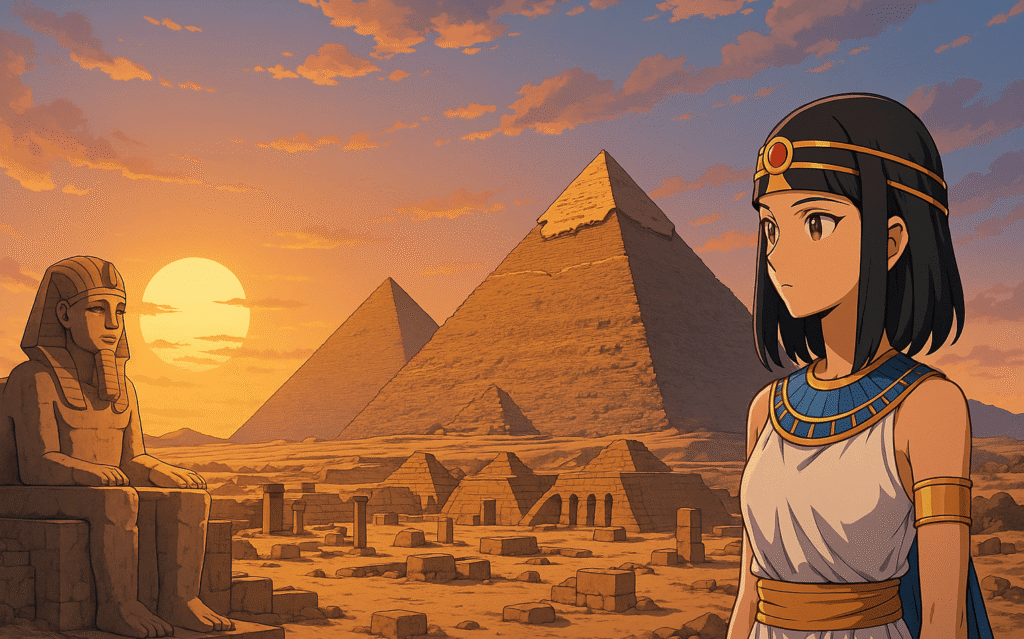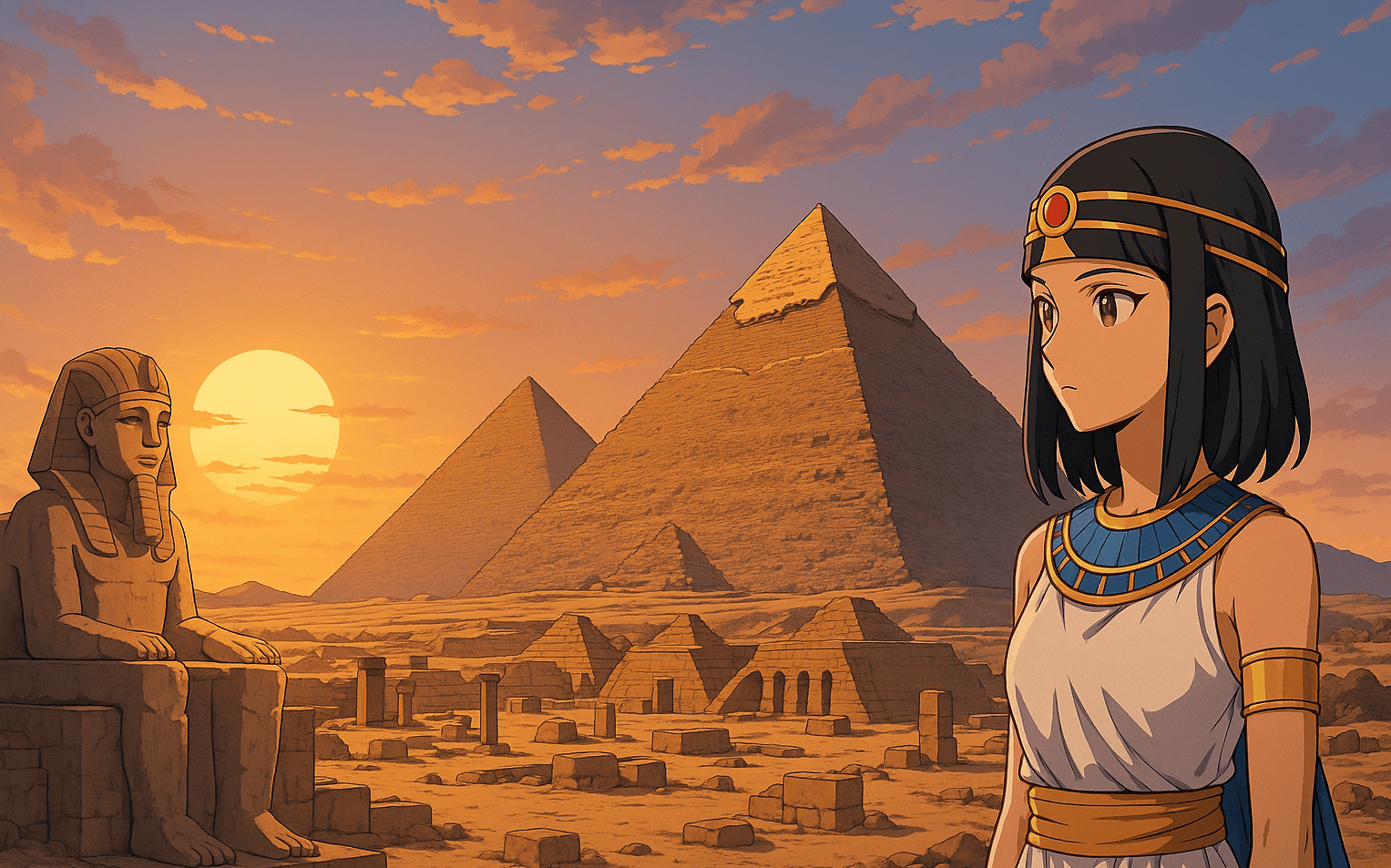Ancient Civilizations – Foundations, River Cradles & Enduring Lessons

Cities did not appear because someone craved skyline bragging rights. They appeared because grain surpluses, river silt, and reliable counting allowed more mouths to gather in one spot without starving. Once those conditions fell into place, a feedback loop of farming, specialist labour, and rule‑making took hold. Scribes noted harvest tallies on clay in Sumer. Egyptian administrators assigned workers to dredge canals after every Nile flood. Indus engineers standardised brick sizes so neighbourhoods could share replacement parts. In each case the real breakthrough was coordination—getting hundreds or thousands of individuals to accept schedules, norms, and joint projects.
That coordination depended on four pillars: surplus food, shared belief, record‑keeping, and defence. Surplus freed some citizens to handle metallurgy or ritual instead of planting seeds all year. Shared belief convinced everyone that building a stepped temple or erecting an obelisk served a purpose larger than individual comfort. Records offered proof that a tax was paid or a debt cleared. Defence helped the city survive once neighbours realised valuables were piling up behind its walls.
The same pillars still shape modern enterprises. A payroll department tracks surplus time rather than grain. Corporate culture replaces shared ritual. Cloud spreadsheets update the clay tablet. Cyber‑security echoes the watchtower. Strip away the technology and the psychological logic is identical: people cooperate when they trust the system will reward them fairly and protect the results of their labour.
River Cradles and Their Legacies
Mesopotamia sat between the Tigris and Euphrates in what is now Iraq. Seasonal floods were unpredictable, so irrigation ditches demanded constant maintenance. The work schedule produced one of the earliest bureaucracies: overseers, ration distributors, and cuneiform clerks. Cuneiform symbols started as pictographs recording barley units, then evolved into abstract wedges capable of capturing poetry, contracts, and courtroom testimony. The Code of Hammurabi carved on basalt around 1754 BCE illustrates how civil law rose directly from property disputes and injury claims. Liability clauses for collapsed houses feel strikingly similar to today’s building regulations.
Agriculture in Egypt enjoyed a calmer rhythm. The Nile rose and fell with near clock‑like regularity, depositing fertile silt. Predictable harvests allowed Pharaohs to devote vast labour pools to monuments such as the pyramids. Those structures were not improvised. Surveyors used simple sighting instruments to align foundations to within fractions of a degree. Teams logged stone deliveries on ostraca—limestone flakes functioning like shipping labels. The Egyptian decimal place‑value system, though less famous than the later Hindu‑Arabic numerals, shows an early appreciation of positional notation that accountants still rely on.
Further east, the Indus Valley civilisation built Mohenjo‑Daro and Harappa along a now‑vanished river system feeding the Indus. Urban blocks followed a north–south grid. Houses included private bathrooms connected to covered drains that ran the length of the street. Such infrastructure implies tax revenue, plumbing expertise, and civic planning. Although their script remains undeciphered, uniform seal impressions suggest quality control over traded goods. This standardisation resembles modern barcodes ensuring a package of tea leaves England and appears in identical form on shelves in Tokyo.
In China, the early dynasties harnessed the Yellow River’s loess plains. Shang artisans cast bronze using piece‑mould technology that supported intricate surface patterns. Oracle bones—ox scapulae or turtle shells—preserve questions asked of royal ancestors, often about harvest timing or military campaigns. These inscriptions supply the earliest continuous record of Chinese writing, still recognisable in today’s characters for “rain” or “grain.” A steady lineage of logograms made it easier for distant provinces to read central edicts even after dialects drifted, a problem mirrored by contemporary multinational firms translating policy documents for several regions.
Transoceanic and Highland Hubs
Not every advanced society hugged a major river. In Mesoamerica, the Olmec carved basalt heads that likely portrayed rulers wearing ball‑game helmets. Rubber collected from Castilla elastica trees enabled that sport, while cacao beans doubled as a prestige drink and a unit of account. The Olmec distributed jade figurines across hundreds of kilometres, relying on gulf‑coast routes and seasonal fairs. Their influence can be traced in later Maya cities such as Tikal, where limestone pyramids rose above rainforest canopy. Maya scribes recorded dynastic births, tribute, and celestial cycles in the Long Count calendar. Accurate eclipse predictions enhanced elite authority—an early case of data analytics supporting leadership credibility.
South of the equator, the Andean cultures overcame thin air and terraced steep slopes. Chavín religious centres drew pilgrims with feline iconography and hallucinogenic rituals. Centuries later, the Wari tested road networks and storage depots at altitude. The Inca then scaled that model to imperial proportions. Without draft animals suitable for wheeled carts, they moved quinoa, charqui, and copper tools on llamas along stone‑paved routes. Relay runners, or chasqui, carried quipu—bundles of knotted cords that logged inventory counts and population figures. Unlike alphabets, quipu conveyed numeric information through knot position and type, illustrating that data compression does not require phonetic writing. Modern barcode scanners reading coloured strings on optical fibre follow the same principle: place, tension, and sequence equal meaning.
Across the Mediterranean, Phoenician merchants from Tyre and Sidon mastered cedar shipbuilding and purple dye extraction from murex snails. Their syllabic script, adapted by the Greeks, later gave Latin its letters. Every time an English‑language contract uses “A” for the first clause or “B” for the second, that ancestry surfaces. Meanwhile the Greeks experimented with citizen assemblies, theatre as civic discussion, and maritime insurance schemes recorded on stone steles. Romans adopted those letters, refined road gradients, and issued bronze coins that carried the Senate’s abbreviation SPQR far outside Italy. Although Rome lies just outside the period many teachers tag as “ancient civilisation” and closer to classical antiquity, its administrative toolkit—census, legal precedent, single currency—completed patterns that began in Sumer two millennia earlier.
From Clay Tablets to Cloud Storage – Enduring Lessons
Data drives authority. Sumerian temple priests tallied sheep owed in tax. Maya astronomers timed corn planting by Venus cycles. Today, KPI dashboards shape marketing budgets. Cultures that measured with accuracy could promise fair allocation. Those that relied on oral recollection faced quicker collapse when drought or invasion struck.
Infrastructure outlives rulers. The Great Bath at Mohenjo‑Daro, the qanat tunnels of Persia, and Roman aqueducts kept serving populations long after specific dynasties vanished. Current mayors still cut ribbons on subway lines laid by predecessors. Choosing equipment that survives organisational turnover is a lesson project managers repeat whenever they debate proprietary versus open‑source software.
Standardisation multiplies trade. Indus seals, Egyptian cubits, Chinese bronze weight sets, and Roman coin denominations all solved the same bottleneck: how do strangers clear a deal quickly without arguing over units? ISO codes, container sizes, and USB plugs continue the pattern. Each cut haggling overhead so producers can focus on volume and quality.
Shared stories reduce friction. Myths of Osiris, Marduk, or Huangdi validated tax collection because they framed the state as caretaker appointed by divine or cosmic order. Modern businesses rely less on divine appointment, but company narratives about mission and stakeholder value still push staff to accept late nights before product launch. Remove the story and extrinsic rewards must rise sharply to preserve motivation, a cost line every CFO tracks.
Geography is opportunity and hazard in equal measure. Rivers made soil fertile yet invited floods. Mountain strongholds offered defence yet hindered grain shipments. Digital terrain follows the same rule: high‑speed fibre grants cloud start‑ups access to customers worldwide, while cyber‑attacks threaten the same paths. Management strategy still begins with an honest map.
Irrigation bureaucracy and agile software have something in common. Both break colossal jobs into tasks, assign ownership, and iterate after feedback. Mesopotamian overseers inspected canal segments in rotation. Scrum boards migrate sticky notes instead of silt, but the mental model—small units advancing toward a larger goal—remains familiar.
Finally, failure modes repeat. Ecological stress felled the Classic Maya in parts of the Yucatán, plague shook Rome, and salinisation starved Sumerian wheat. Excess resource extraction, pandemic risk, and soil degradation headline global business reports twenty centuries later. The warning is clear: technology may improve, but biological and physical limits still apply.

